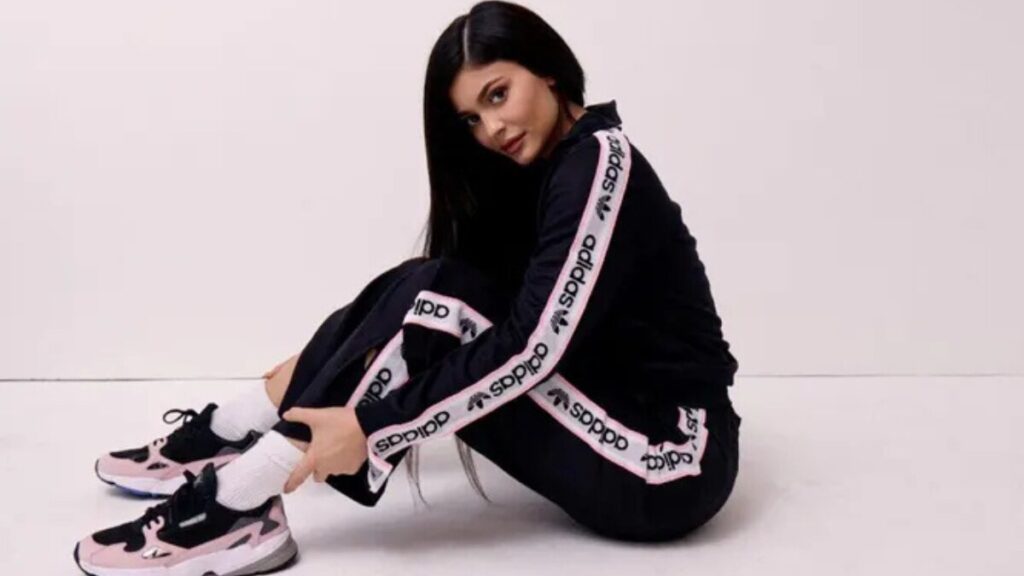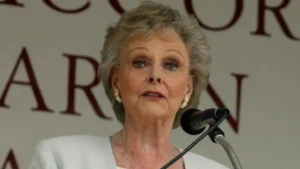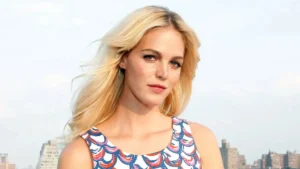In March 2019, Kylie Jenner appeared on the cover of Forbes, crowned the “youngest self-made billionaire” at just 21 — a headline that set social media ablaze and ignited debates about what self-made really means. Was she the Kylie Cosmetics founder who built an empire from her bedroom, or a celebrity with a head start few could dream of? The truth, as with most icons of celebrity business success, lies somewhere between.
Fast forward to today, with an estimated net worth of around $670 million, according to Forbes, Kylie remains one of the most financially successful figures in beauty. Her rise wasn’t simply a product of fame; it was a calculated blend of personal brand power, market timing, and a deep understanding of how to turn followers into customers. The Lip Kit phenomenon, the strategic Coty deal, and her expansion into skincare and lifestyle products all show a shrewdness that goes beyond influencer culture.
For readers, Kylie’s story is more than a wealth figure — it’s a blueprint for navigating the modern intersection of celebrity and entrepreneurship. Whether you admire her hustle or question her head start, her trajectory offers a rare look at how cultural capital can be converted into commercial dominance. And that’s the journey we’re about to unpack.
From Lip Kits to Legacy — How Kylie Cosmetics Captured a Generation
The Lip Kit Launch That Sold Out in Minutes
It was November 2015, and Kylie Jenner’s first Lip Kit launch felt more like a concert ticket drop than a beauty release. Fans sat glued to their screens, refreshing the Shopify-powered site as the countdown hit zero. Within minutes — some swear it was seconds — every shade was gone. Social media lit up with screenshots of confirmation emails, frantic “sold out” messages, and resale listings charging triple the price.
This wasn’t some accidental stroke of luck. Kylie had tapped into the perfect storm of limited-edition beauty, first product launch success, and the fear of missing out. The small inventory runs weren’t just about production constraints; they fueled an urgency that the makeup industry hadn’t seen at this scale. In one drop, she disrupted the traditional cosmetics playbook — bypassing department store counters and going straight to her audience. It was the birth of a new kind of beauty marketing, and Kylie was holding the brush.
Riding the Social Media Distribution Highway
Instead of billboards or glossy magazine spreads, Kylie Jenner built her beauty empire from her phone. Her Instagram-first approach rewrote the rules of social media marketing for beauty, sidestepping traditional ad buys and speaking directly to millions of followers. Where legacy brands might have spent months crafting a print campaign, Kylie posted a selfie wearing an unreleased shade — instantly sparking influencer-driven sales before the product even had a launch date.
Her feed blurred the line between personal life and promotion: one day, a candid with her daughter; the next, a close-up swatch on her wrist. This mix kept engagement high and followers invested, effectively turning her audience into a real-time focus group. Viral moments — like the teaser video of her swiping on “Candy K” in natural light — didn’t just advertise a product; they created cultural events. In bypassing the old beauty playbook, Kylie proved the most powerful billboard can fit in the palm of your hand.
Strategic Ownership — Why Selling 51% Was a Power Move, not a Sellout
In November 2019, Kylie Jenner shocked both Wall Street and the beauty world by selling a 51% stake in Kylie Cosmetics to Coty Inc. for a reported $600 million, pegging the brand’s valuation at a staggering $1.2 billion. For some, it looked like a quick cash-out. For others, it was a masterclass in equity strategy.
Here’s the plain version: Kylie traded majority ownership for long-term security and serious operational firepower. Coty, a century-old beauty conglomerate, brought global distribution networks, manufacturing muscle, and marketing resources that could take Kylie Cosmetics from a cult favorite to a worldwide staple. It wasn’t just about the payout — it was about scalability.
Critics asked if she was “selling out,” but history shows this move aligns with what savvy entrepreneurs do once their brand reaches peak velocity. Think George Clooney selling Casamigos to Diageo or Dr. Dre with Beats and Apple. Selling a controlling stake doesn’t mean surrendering the soul of the brand — especially when you negotiate to stay on as the creative face and visionary.
In the high-stakes world of celebrity brand acquisitions and beauty industry M&A, timing is everything. By partnering at her peak, Kylie locked in her valuation before market shifts or saturation could take a toll. She essentially converted paper wealth into tangible assets, while ensuring the Kylie Cosmetics name — and aesthetic — stayed under her creative control. Far from a sellout, it was the kind of calculated move that cements a mogul’s staying power.
The Social Media Engine — Kylie’s Billion-Dollar Billboard
Instagram, TikTok, and the Art of Product Teasing
Kylie Jenner has turned product teasing into an art form. A week before a launch, she might post a cryptic close-up of a shimmer on her lips, no caption, just enough to spark speculation. Soon after, Stories feature swatches on her arm, quick application clips, or behind-the-scenes packaging shots. By the time the full reveal drops in a polished Reel or TikTok, anticipation is at a fever pitch.
This rhythm blends social commerce and FOMO marketing seamlessly. Fans feel like they’ve been part of the discovery process, not just the end sale — a core beauty influencer strategy. On TikTok, she taps into trending sounds or challenges to slip in product moments that feel native to the platform, not forced. What looks like casual posting is a tightly timed content pipeline, designed to keep followers talking, sharing, and — most importantly — clicking “add to cart” the moment the product goes live.
Monetizing the Personal Brand Without Diluting It
Kylie Jenner’s feed is a masterclass in brand authenticity — and in keeping audience trust while running a multimillion-dollar beauty business. Scroll through her posts and you’ll find birthday party snapshots, candid moments with her kids, and travel diaries sitting alongside high-gloss campaign shots. This content mix strategy ensures her followers don’t feel like they’re scrolling through a never-ending ad reel.
She understands that audience loyalty comes from connection, not constant promotion. A genuine laugh in a behind-the-scenes clip can make a follower more receptive to a product plug later. Kylie also adapts to algorithm shifts quickly — leaning into Reels when Instagram favors video, or posting casual, unfiltered TikToks when that format gains traction. By blending personal milestones with brand moments, she keeps her image multidimensional, making every product drop feel like an extension of her life rather than a detached sales pitch. It’s marketing that doesn’t feel like marketing.
Beyond Cosmetics — Diversifying into Skincare, Baby Care, and Lifestyle
After conquering the color cosmetics space, Kylie Jenner set her sights on something bigger: a full-fledged beauty and lifestyle portfolio. In 2019, she launched Kylie Skin, offering cleansers, moisturizers, and serums that promised the same aesthetic minimalism as her makeup line. Then came Kylie Baby, a pastel-toned range of shampoos, lotions, and gentle care products designed for parents who wanted “Kylie-level” branding in their nursery.
These moves weren’t random — they were textbook brand diversification. By leaning into category adjacency, Kylie targeted the same core customer at different life stages and touchpoints. A lipstick buyer could easily become a skincare loyalist, and later, a parent stocking baby care essentials. It’s a lifestyle product expansion strategy that builds on existing trust while increasing customer lifetime value.
Maintaining consistency across these sub-brands is key. The packaging, social media tone, and product photography all carry Kylie’s signature pastel palette and clean aesthetic, yet each line speaks to its audience. Kylie Skin leans into self-care luxury, while Kylie Baby emphasizes safety and gentleness.
Of course, diversification comes with risks. Some critics question whether too many spin-offs dilute the core identity of Kylie Cosmetics. But so far, the evidence suggests strength, not weakness: each venture reinforces the overarching narrative of Kylie as a beauty and lifestyle tastemaker. By expanding her beauty portfolio strategically — not haphazardly — she’s moving closer to building an empire that lives far beyond the makeup bag.
Inside the Celebrity Brand Playbook — Lessons from Kylie’s Rise
Kylie Jenner’s path from reality TV regular to global beauty mogul offers more than a headline-grabbing success story — it’s a living playbook for personal brand monetization done right. One of her earliest and most decisive moves was launching Kylie Cosmetics while her social media influence was at its peak. By tapping into an existing audience that was already emotionally invested in her style and persona, she skipped the cold-start problem that plagues most startups.
But reach alone isn’t enough; Kylie retained tight control over the creative direction, ensuring every product, campaign, and Instagram post aligned with her aesthetic. This brand consistency built trust, making each launch feel like a natural extension of her image. It’s a core principle of celebrity marketing strategies: when your brand is you, authenticity isn’t optional.
Timing was another silent but powerful factor. Kylie recognized the beauty industry’s shift toward influencer-led brands before the market became saturated. Her early Lip Kit drops didn’t just meet demand — they created it. This sensitivity to trends, from matte lip colors to TikTok beauty challenges, allowed her to ride waves rather than chase them.
Perhaps the most underappreciated move was knowing when to scale. The Coty partnership gave Kylie operational leverage without erasing her as the brand’s face. It’s a reminder for entrepreneurs that sometimes growth means bringing in the right partners, not going it alone.
In essence, Kylie’s rise underscores that building an empire isn’t about copying someone else’s path — it’s about aligning personal influence with market timing, creative control, and the willingness to evolve before the audience moves on.
How Kylie’s Net Worth Compares in the Beauty Mogul League
| Mogul | Net Worth (USD) | Brand(s) | Launch Year |
|---|---|---|---|
| Kylie Jenner | $670M | Kylie Skin | 2015 |
| Rihanna | $1.4B | Fenty Beauty | 2017 |
| Huda Kattan | $560M | Huda Beauty | 2013 |
| Anastasia Soare | $660M | Anastasia Beverly Hills | 1997 |
When stacked against her peers, Kylie’s beauty mogul comparison reveals a unique formula. Unlike Rihanna’s Fenty Beauty, which launched with LVMH backing and a luxury positioning built on inclusivity, Kylie Cosmetics started as a lean, direct-to-consumer play powered almost entirely by her brand. That speed-to-market approach allowed Kylie to disrupt the makeup industry before traditional players could respond.
Huda Kattan’s Huda Beauty grew from a beauty blog and influencer brand into a full product empire, but her model leans heavily on YouTube and education-driven content. Anastasia Soare, meanwhile, took a decades-long path, building a cult following around one hero product category — brows — before expanding.
Kylie’s celebrity entrepreneur ranking sits in a sweet spot: her brand is accessible enough to appeal to mass-market beauty buyers, yet aspirational in its aesthetic. This hybrid positioning, combined with early global distribution through Coty, helps explain why her brand could hit billion-dollar valuations faster than most. It’s not just the product mix — it’s the velocity.
The Controversy Factor — Navigating Public Perception and “Self-Made” Debates
Kylie Jenner’s business story hasn’t been without turbulence. The most high-profile bump came in 2020 when Forbes, which had once crowned her the “youngest self-made billionaire,” published a follow-up alleging inflated revenue figures and revised her status. Overnight, the narrative shifted from triumph to scrutiny, fueling debates over privilege, access, and what “self-made” really means.
Rather than engage in a public feud, Kylie leaned into quiet PR recalibration. She maintained focus on her product launches, let her core audience drive the conversation back to beauty, and subtly emphasized her work ethic in interviews and behind-the-scenes content. This approach reflects a seasoned understanding of celebrity reputation management — controlling the narrative by controlling the spotlight.
She also bolstered brand authenticity through philanthropic moves, from COVID-19 relief donations to funding social causes, reinforcing a human side beyond the gloss. In doing so, Kylie executed a textbook case of brand trust recovery: acknowledge controversy indirectly, avoid over-defensiveness, and redirect attention toward tangible value.
For all the criticism, her sales and social reach remained largely intact, suggesting that in the influencer economy, consistent delivery can outweigh a single narrative setback. In the long game of media narrative control, Kylie proved she’s not just selling lip kits — she’s managing a brand built to endure storms.
My Close-Up View of the Kylie Effect
I still remember walking into the launch event for a new Kylie Cosmetics collection — the air thick with the scent of peonies and the faint sweetness of vanilla from the product displays. The room was awash in her signature blush-pink palette, from the velvet drapes to the cocktail napkins embossed with tiny silver lip prints. Photographers moved like a tide, cameras clicking in unison, but Kylie didn’t rush through the crowd.
When she finally stepped onto the stage, she wasn’t the high-gloss Instagram persona; she was deliberate, scanning the room, greeting partners and influencers by name. Between photo ops, I caught her leaning in to a product developer, discussing shade names and packaging tweaks like she was still in the early startup days. It was clear this wasn’t just a photo-friendly cameo — she was running the room, orchestrating details, reading the energy.
By the time the evening wrapped, it felt less like a brand launch and more like an immersive campaign rollout. Every touchpoint — the lighting, the playlist, the pacing of product reveals — was intentional. That night, I realized the Kylie Effect wasn’t just about selling makeup. It was about engineering moments you wanted to remember and then buy into.
What’s Next? Kylie’s Brand in the Age of AI Beauty, AR Try-Ons, and Global Expansion
Kylie Jenner’s next chapter may be less about launching new product lines and more about transforming how customers experience them. The future of beauty tech is already reshaping the industry, with AI-driven makeup recommendations that analyze skin tone, undertones, and even lighting conditions to suggest the perfect shade match. Brands like L’Oréal and Sephora have pioneered these tools, and Kylie’s digital-first DNA makes her a natural fit to integrate similar features directly into her e-commerce platforms.

Augmented reality try-on apps could take the Kylie Cosmetics experience even further. Imagine previewing a “Candy K” lip or “Stormi” highlighter through your phone’s camera before purchasing — a virtual cosmetics experience that blends the convenience of online shopping with the confidence of an in-store swatch.
Then there’s global brand expansion. While Kylie has already entered major Western markets through Ulta and online channels, regions like Southeast Asia, the Middle East, and Africa remain largely untapped for her. These markets are seeing rapid growth in beauty consumption, and localized product lines or region-specific collaborations could accelerate her footprint.
Grounded in her history of spotting trends early and partnering for scale, Kylie’s next moves are likely to merge high-tech personalization with strategic geographic reach — making the brand not just a staple in vanities, but in the evolving digital beauty landscape worldwide.
The Blueprint for Building Celebrity Empires
Kylie Jenner’s trajectory from reality TV star to global beauty powerhouse is more than a celebrity success story — it’s a case study in how to build enduring influence into a thriving business. Her playbook blends three strategic pillars: audience-first marketing that treats followers as both community and customers; smart ownership decisions, including knowing when to partner for scale without losing creative control; and calculated category expansion into skincare, baby care, and beyond.
In an era where celebrity brand building can happen overnight, Kylie’s rise shows that sustained success demands more than a famous name. It requires timing, trend fluency, and a willingness to evolve before the audience moves on. For modern entrepreneurs, her journey underscores that authenticity and adaptability are as valuable as capital.
Kylie didn’t just sell Lip Kits — she sold an identity, an aesthetic, and a lifestyle that millions wanted to buy into. And in doing so, she’s left a blueprint for the next generation of moguls: build trust, move fast, and never underestimate the power of a personal brand in the digital age.
Mohit Wagh is the co-founder of The Graval with over 10 years of experience in SEO and content strategy. He specializes in crafting data-driven, authoritative content that blends cultural insight with digital growth.





7 thoughts on “Inside Kylie Jenner’s Billion-Dollar Brand Play: Cosmetics, Social Media, and Strategic Ownership”